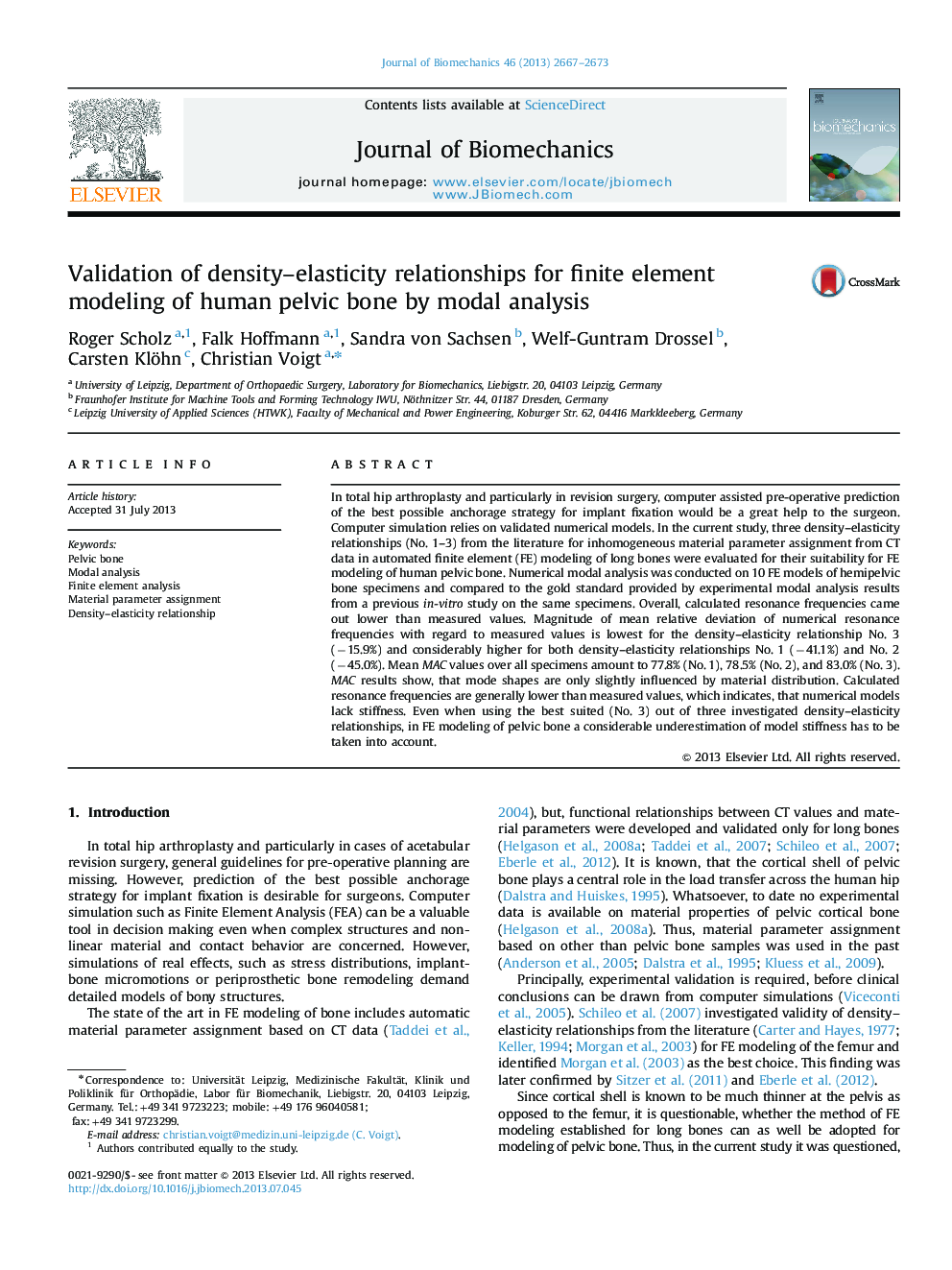| Article ID | Journal | Published Year | Pages | File Type |
|---|---|---|---|---|
| 10432329 | Journal of Biomechanics | 2013 | 7 Pages |
Abstract
In total hip arthroplasty and particularly in revision surgery, computer assisted pre-operative prediction of the best possible anchorage strategy for implant fixation would be a great help to the surgeon. Computer simulation relies on validated numerical models. In the current study, three density-elasticity relationships (No. 1-3) from the literature for inhomogeneous material parameter assignment from CT data in automated finite element (FE) modeling of long bones were evaluated for their suitability for FE modeling of human pelvic bone. Numerical modal analysis was conducted on 10 FE models of hemipelvic bone specimens and compared to the gold standard provided by experimental modal analysis results from a previous in-vitro study on the same specimens. Overall, calculated resonance frequencies came out lower than measured values. Magnitude of mean relative deviation of numerical resonance frequencies with regard to measured values is lowest for the density-elasticity relationship No. 3 (â15.9%) and considerably higher for both density-elasticity relationships No. 1 (â41.1%) and No. 2 (â45.0%). Mean MAC values over all specimens amount to 77.8% (No. 1), 78.5% (No. 2), and 83.0% (No. 3). MAC results show, that mode shapes are only slightly influenced by material distribution. Calculated resonance frequencies are generally lower than measured values, which indicates, that numerical models lack stiffness. Even when using the best suited (No. 3) out of three investigated density-elasticity relationships, in FE modeling of pelvic bone a considerable underestimation of model stiffness has to be taken into account.
Related Topics
Physical Sciences and Engineering
Engineering
Biomedical Engineering
Authors
Roger Scholz, Falk Hoffmann, Sandra von Sachsen, Welf-Guntram Drossel, Carsten Klöhn, Christian Voigt,
